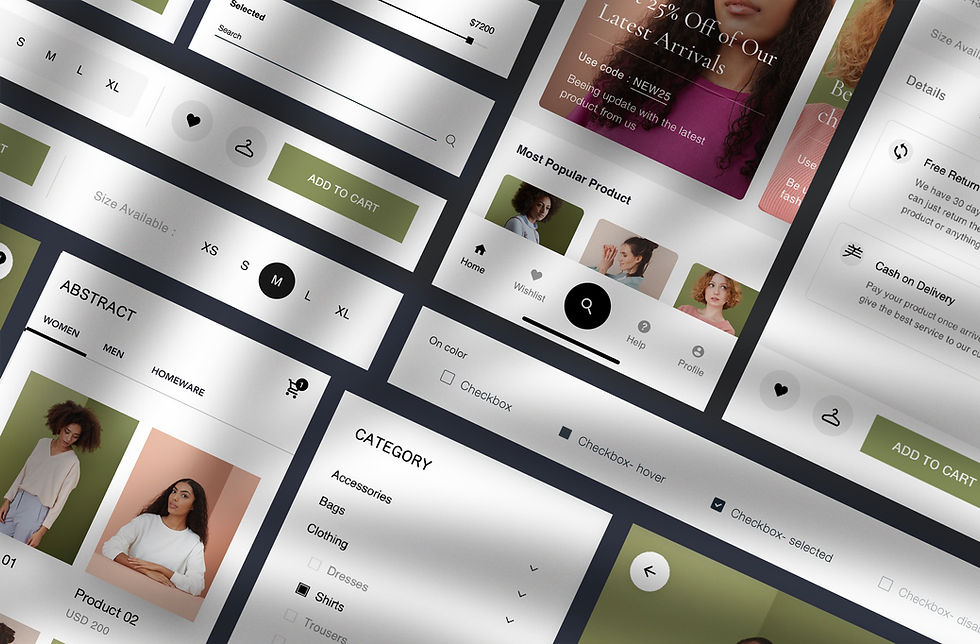Ecommerce Transforming Our World
- Digital Leaders Club
- Oct 30, 2020
- 4 min read

For Ecommerce businesses, an online experience is crucial when it comes to attaining and retaining customers. It’s important to ensure that a customers’ needs are met when they visit your website. There are different techniques and methodologies that can be used to achieve this. We are seeing an increase in functionality and elements across many Ecommerce sites, with the aim to provide a unique customer experience.
Technology has transformed how we live our lives; the way we commute, the way we communicate, socialise, game and provide services. Ecommerce has is continuing to play a part in the world we live in.
Increased Digital Marketing
Marketing and Ecommerce go hand-in-hand. Ecommerce has changed the way in which businesses conduct their day-to-day operations; constantly introducing new innovations. From how products and services are promoted and advertised, Ecommerce has a big say in that process.
There are billions of internet users at the moment, and this gives brands a key chance to market their products, share content and build relationships with consumers. Social commerce is a key example. Platforms such as Instagram and Facebooks now allow users and brands to market their products – consumers are actively shopping via social media. Recent research by Visa revealed that almost a quarter of all online purchases are now made through social media.
From blogs to emails to applications to WordPress forms to social media profiles, there are many ways for companies to use digital techniques to gain new leads and conversions.
Mobile Optimisation
The great thing about Ecommerce is that consumers are able to visit websites and make purchases through different devices. This has saved the need to travel to a physical store and conduct shopping activity. Online stores also allow consumers to browse hundreds, if not thousands of products at the same time. They can also create accounts, update details and add to their ‘wish list’.
As online shopping has increased, the need for mobile optimisation and ‘mobile-friendly buying’ is now vital. Consumers are spending more time on their smartphones, they’re seeing ads and services through social media, internet and applications. If you’re marketing on mobile, there’s better chance for you to be seen.
Thanks to the ever-increasing availability of Ecommerce websites, consumers now have the convenience of shopping from whenever, wherever, and for whatever product or service they may need.
Voice Commerce
Voice search is becoming a popular method of interaction for not just smartphone users, but those with smart devices. It’s likely that you’ve used your phone to ask for directions to a nearby station, restaurant or general location. Now, you can even use voice to make an appointment or purchase!
There are different devices that you can use now to make a purchase:
Amazon Alexa
Google phones
Microsoft Cortana
This form of shopping has allowed consumers to ask a digital assistant to make a purchase for them and in just a few seconds, the order is placed! Using voice commerce devices is projected greatly increase in the next few years, offering another convenient option for shopping at home or whilst you are on-the-go.
Shopping With Virtual Reality
In addition to shopping for items whilst on-the-go, companies are now looking to shift the digital landscape by offering virtual reality shopping. In a bid to attract and retain customers, companies are looking to offer highly personalised, immersive and unique shopping experiences. Augmented reality has even offered consumers the chance to try on items before purchasing.
In the future, consumers will be able to browse products, add items to their car, and even proceed to check out while using a virtual reality headset.
According to AntyCip Statistics show that two-thirds of internet users would be interested in virtual reality, and 63% said such technologies would change the way they shop.
Greater Accessibility
In addition to consumers being able to use their mobile phones to shop, but Ecommerce has ensured better accessibility. As mentioned before, you do not have to travel to a store which may be some time away to make a purchase, but you can purchase with a click of a button. Amazon.co.uk a great example.
With Ecommerce has come almost 100% accessibility. If a store ships to your area, you can purchase items from it.
Greater accessibility is not only beneficial for consumers, but also for companies. The more accessible stores are, the greater the number of clients that the company can hopefully land sales from. This creates the perfect environment for landing leads, conversions, and marketing to new target audiences.
COVID-19 Influence
The globe has endured a difficult year with the Covid-19 pandemic, having a major effect on businesses as well as the economy. As a result, retail stores have had to close down and shift more of a focus to online. Shoppers who have traditionally preferred to shop in-store, have had to adapt to conduct their shopping activity online.
This has seen more traffic to Ecommerce sites and an increase on social media presence.
10% more time spent on mobile this year (Merkle)
79% of consumers will continue to spend more conservatively in the coming months (Merkle)
68% of advertisers expect COVID-19 to impact their ad spending into 2021 (Influencer Marketing Hub)
62% of consumers shop online more now than before the pandemic (Bazaarvoice)
The Ecommerce sector has greatly impacted the lives of everyday consumers. From impacting how we shop to where we shop for the number of items we have available at our fingertips, the technology has and will continue to make consumer lives much more convenient.
Check out The Digital Leaders Podcast






Comments